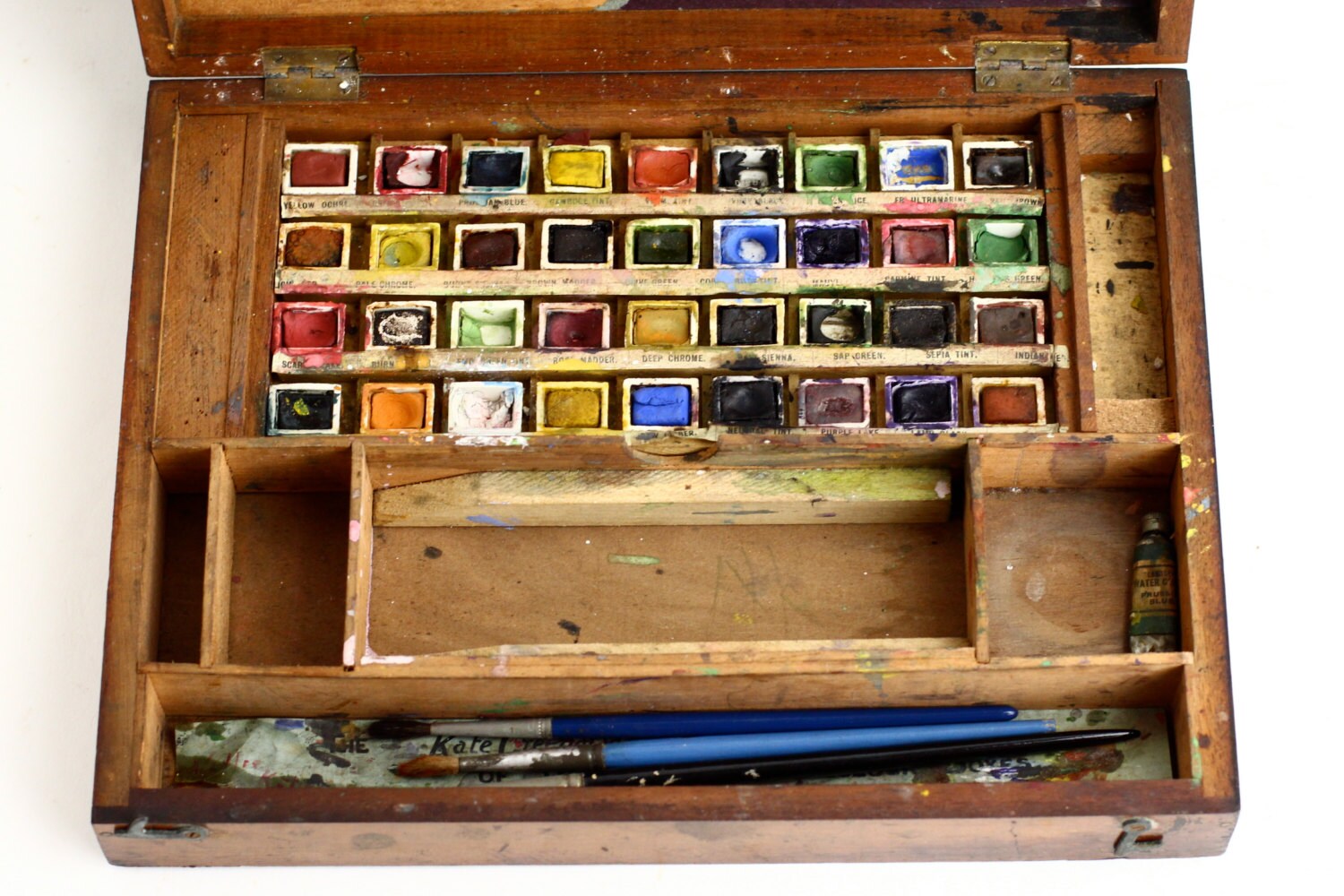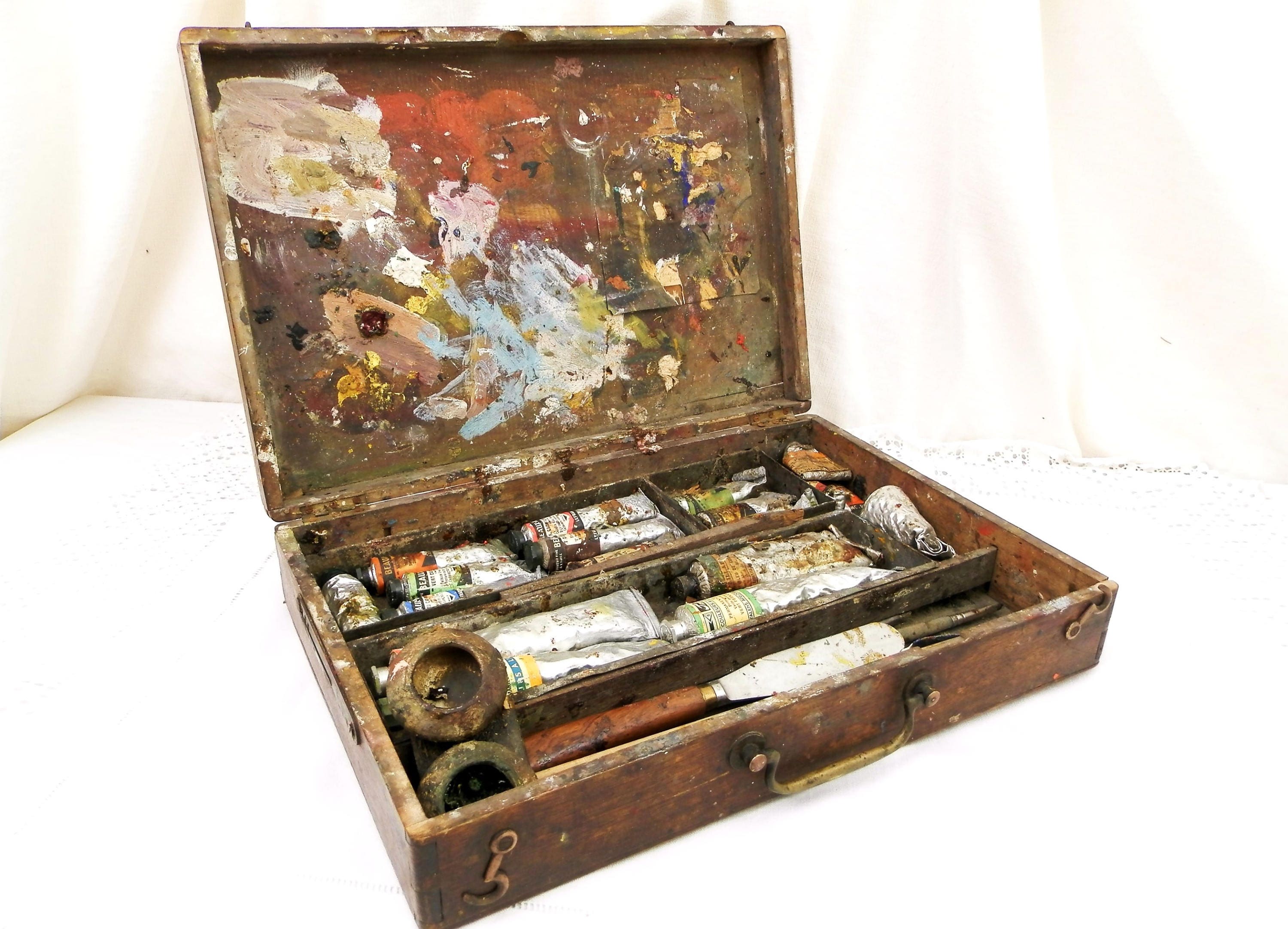Antique artist paint boxes, with their rich history and intricate craftsmanship, have played a pivotal role in the evolution of painting techniques and artistic expression. This article delves into the captivating world of these boxes, exploring their origins, construction, variations, and influence on both historical and contemporary art.
From the Renaissance masters to modern-day artists, antique paint boxes have been indispensable tools, inspiring creativity and facilitating the creation of timeless masterpieces.
Historical Significance of Antique Artist Paint Boxes
Antique artist paint boxes, with their rich history and craftsmanship, have played a pivotal role in the development of painting techniques and the preservation of artistic heritage.
Discover more by delving into spray to stop snoring further.
Originating in the 15th century, these boxes were initially crafted from wood and featured compartments to hold pigments, brushes, and other painting tools. As artists traveled and exchanged ideas, the designs of paint boxes evolved, incorporating features such as folding lids, adjustable compartments, and built-in palettes.
Cultural and Artistic Impact
Antique artist paint boxes not only served as practical storage solutions but also influenced the way artists approached their craft. The compact and portable nature of these boxes allowed artists to work en plein air, capturing the beauty of their surroundings in real-time.
Obtain recommendations related to weight loss with strength training that can assist you today.
Additionally, the organization and accessibility of materials within the boxes fostered a more efficient and streamlined painting process.
Understand how the union of 20 x 20 paint booth filters can improve efficiency and productivity.
The use of antique paint boxes has been documented throughout art history, with notable artists such as Leonardo da Vinci, Vincent van Gogh, and Pablo Picasso utilizing these tools. The boxes themselves have become objects of art, with their intricate designs and historical significance adding to their value.
Construction and Materials of Antique Artist Paint Boxes
Antique artist paint boxes were meticulously crafted using a range of materials and construction methods that have significantly influenced their durability and functionality over time.
The choice of wood played a crucial role in the box’s durability and longevity. Mahogany, walnut, and oak were commonly used due to their strength, resistance to warping, and beautiful grain patterns. These hardwoods provided a sturdy base for the paint box, ensuring it could withstand the rigors of travel and daily use.
Find out further about the benefits of wods for crossfit that can provide significant benefits.
Metals and Hardware
Metal fittings, such as hinges, clasps, and handles, were essential for the functionality of the paint box. Brass, iron, and steel were frequently employed, offering durability and resistance to corrosion. These metal components allowed the box to be opened and closed smoothly, protected the contents from damage, and provided convenient carrying options.
Types and Variations of Antique Artist Paint Boxes
Antique artist paint boxes come in various types and sizes, each designed for specific purposes.
Categorization by Size and Shape, Antique artist paint box
Paint boxes can be categorized based on their size and shape:
- Small, Portable Boxes:These were popular for traveling artists and students. They typically had a few compartments for basic colors and brushes.
- Medium-Sized Boxes:These were used by professional artists for studio work. They had more compartments and could hold a wider range of colors and brushes.
- Large, Cabinet-Style Boxes:These were the most elaborate and expensive type of paint box. They had multiple drawers and compartments, and could hold a vast array of paints, brushes, and other tools.
Variations in Design and Decoration
Antique paint boxes exhibit a wide range of designs and decorations:
- Engravings:Many paint boxes were engraved with intricate designs, often depicting scenes from nature or mythology.
- Carvings:Some boxes were elaborately carved with decorative motifs, such as flowers, leaves, and animals.
- Paint Finishes:Paint boxes were often painted in vibrant colors, with decorative accents such as gold leaf or enamel.
Specific Purposes and Uses
Different types of paint boxes were designed for specific purposes:
- Sketching Boxes:Small, portable boxes used for sketching and watercolor painting outdoors.
- Studio Boxes:Medium-sized boxes used for studio work, with compartments for a range of paints and brushes.
- Traveling Boxes:Large, cabinet-style boxes designed for transporting large quantities of paints and materials.
Collecting and Restoring Antique Artist Paint Boxes
Collecting and restoring antique artist paint boxes can be a rewarding hobby that combines a passion for art history with a love of craftsmanship. These boxes offer a glimpse into the lives and working methods of artists from bygone eras and can be valuable additions to any collection.
When identifying and valuing antique artist paint boxes, it is important to consider the following factors:
- Age:Older boxes are generally more valuable than newer ones.
- Condition:Boxes that are in good condition with minimal damage will command a higher price.
- Provenance:Boxes that can be traced back to a famous artist or owner will be more valuable.
- Rarity:Boxes that are rare or unique will be more valuable.
Proper Storage and Conservation Techniques
Proper storage and conservation techniques are essential for preserving the value and condition of antique artist paint boxes. Here are some tips:
- Store boxes in a cool, dry place away from direct sunlight and heat.
- Keep boxes away from moisture and pests.
- Handle boxes with care and avoid dropping or bumping them.
- Clean boxes regularly with a soft, dry cloth.
Restoring Antique Paint Boxes
Restoring antique paint boxes requires a combination of skill, patience, and knowledge. Here are the steps involved:
- Cleaning:Remove dirt and grime from the box using a soft, damp cloth. Avoid using harsh chemicals or abrasives.
- Repair:Repair any damage to the box using appropriate materials and techniques. For example, you may need to glue loose joints or fill in cracks.
- Refinishing:If the box is badly damaged or the finish is worn, you may need to refinish it. This involves removing the old finish and applying a new one.
Influence of Antique Artist Paint Boxes on Contemporary Art
Antique artist paint boxes are experiencing a resurgence of interest among contemporary artists. These boxes inspire new painting techniques and artistic expressions, connecting artists with the past and enriching their creative processes.
Contemporary artists appreciate the craftsmanship, durability, and aesthetic appeal of antique paint boxes. The patina and wear of these boxes add character and a sense of history to their work. Moreover, the compartments and drawers of these boxes provide a convenient and organized way to store and transport paints and brushes.
Examples of Contemporary Artists Using Antique Paint Boxes
- Alex Katzuses antique paint boxes to create his iconic, large-scale portraits and landscapes. The boxes’ limited color palettes and weathered surfaces contribute to the raw and expressive nature of his work.
- Kara Walkerincorporates antique paint boxes into her intricate silhouette installations. The boxes serve as both storage containers for her tools and as sculptural elements that enhance the narrative of her work.
- Theaster Gatesuses antique paint boxes as a medium for his social and political commentary. He transforms these boxes into sculptural objects that explore themes of race, history, and urban renewal.
Ending Remarks
In conclusion, antique artist paint boxes are not mere objects but rather tangible pieces of art history that continue to captivate and inspire artists to this day. Their intricate designs, durable construction, and historical significance make them cherished collectibles, while their influence on contemporary art demonstrates the enduring power of tradition in shaping artistic innovation.
FAQ Resource
What are the key factors to consider when identifying an antique artist paint box?
Authenticity, age, materials used, construction methods, and any unique markings or engravings.
How can I properly store and conserve an antique paint box?
Store in a dry, temperature-controlled environment, avoid direct sunlight, and handle with care.
What are some notable examples of contemporary artists who incorporate antique paint boxes into their work?
Damien Hirst, Ai Weiwei, and Grayson Perry, among others.


